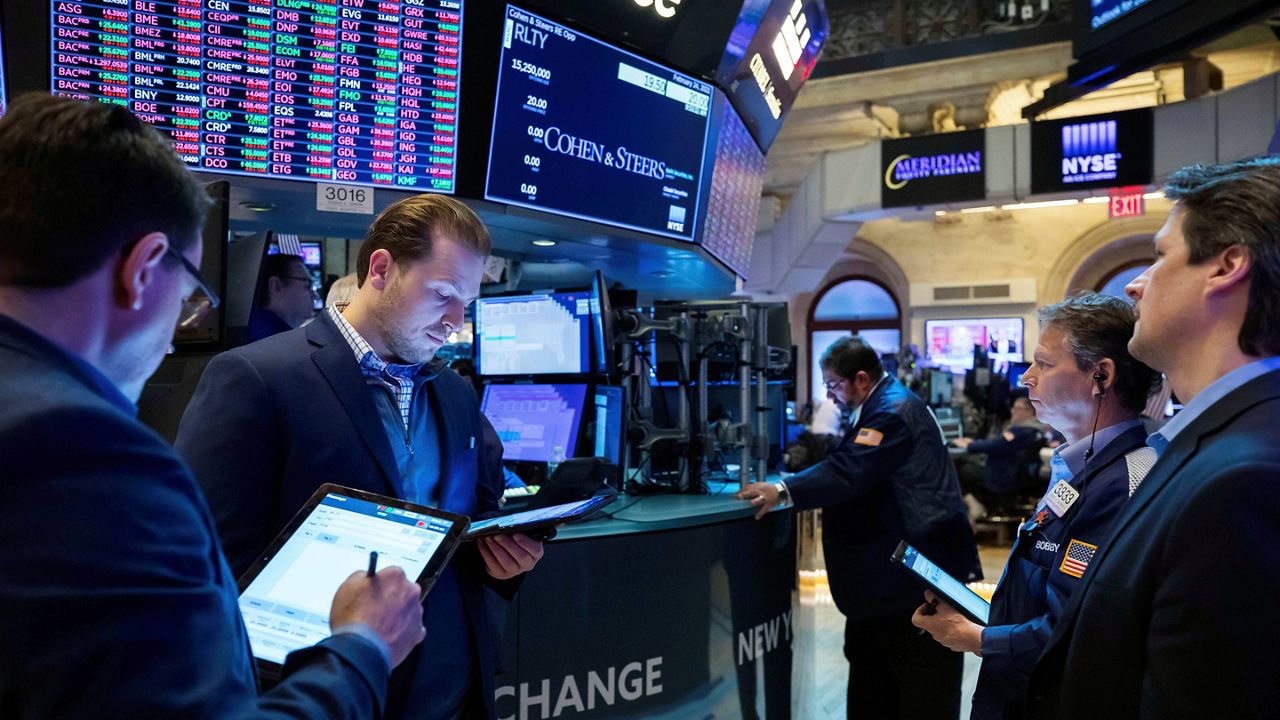Markets shuddered Thursday and then swung wildly after Russia’s invasion of Ukraine threatened to push the high inflation squeezing the global economy even higher.
What You Need To Know
- Markets initially tumbled Thursday after Russia’s invasion of Ukraine, as prices surged for oil, wheat and other commodities on worries the conflict would disrupt global supplies
- But the moves moderated as the day progressed, particularly after President Joe Biden said he wanted to limit the economic pain for Americans and announced new sanctions
- The price of U.S. oil settled at $92.81, up 71 cents for the day, well below the $100.54 it had touched earlier in the day.
- The Nasdaq composite swing from a 3.4% loss in the morning to a 3.3% gain by the end of the day, rising 436.10 points to 13,473.59
Initially, stocks tumbled as prices surged for oil, wheat and other commodities on worries the conflict would disrupt global supplies. But the moves moderated as the day progressed, particularly after President Joe Biden said he wanted to limit the economic pain for Americans and announced new sanctions that fell short of what some had suggested.
On Wall Street, the S&P 500 tumbled 2.6% at the start of trading before erasing the drop and flipping to a gain of 1.5%. The heaviest losses hit stocks in Europe, after officials called Russia’s nearby moves a “brutal act of war,” with the German DAX down 4%.
Beyond its tragic human toll, the conflict looked set to send prices even higher at gasoline pumps and grocery stores around the world. Russia and Ukraine are major producers not only of energy but also grains and various other commodities.
Oil prices on both sides of the Atlantic briefly jumped above $100 per barrel to their highest levels since 2014. But they gave back much of their gains after Biden said the sanctions package is “specifically designed to allow energy payments to continue.” While he described the sanctions as severe, Ukrainian officials urged the U.S. and West to go further and cut Russia from a crucial financial payments system called SWIFT.
Afterward, the price of U.S. oil settled at $92.81, up 71 cents for the day, well below the $100.54 it had touched earlier in the day.
Still, prices rose for everything from heating oil to wheat to gasoline. As with stocks, the movements were sharper in Europe than in the U.S. because its economy is more closely tied to Russia and Ukraine. The spot price in Europe for natural gas jumped more than 50%.
Increases in energy and food prices could amplify worries about inflation, which in January hit its hottest level in the United States in a couple generations, and what the Federal Reserve will do in turn to rein it in.
The Fed looks certain to raise rates for the first time since 2018, with the only question being how quickly and how aggressively it will move, starting next month.
In the past, the Fed has sometimes delayed big policy decisions amid uncertainty about the Kosovo war and the U.S. invasion of Iraq, for example, according to Goldman Sachs. But economists at the bank say they still expect the Fed to raise rates steadily at its upcoming meetings.
The Ukraine tensions probably just make it less likely the Fed will start the process with a bigger-than-usual increase in rates, something some Fed officials had recently suggested.
The Fed was already saddled with the delicate task of raising interest rates enough to stamp out high inflation but not so much as to choke the economy into a recession. Strategists at Evercore ISI said that risk still remains, and has become even more complicated by the attack on Ukraine, but that it’s “substantially greater in Europe relative to the US.”
Many investors also said that past global events, such as an invasion, have had only short-term effects on markets that last a few weeks or months.
With expectations falling for a bigger-than-usual increase in rates next month, stocks that tend to benefit the most from low interest rates led the way for indexes to pare their losses through the day. That put the spotlight on big tech stocks, and Amazon, Microsoft and Nvidia all rose 4.5% or more.
That helped the Nasdaq composite swing from a 3.4% loss in the morning to a 3.3% gain by the end of the day, rising 436.10 points to 13,473.59. It was a remarkable turnaround after the Nasdaq was on track during the morning to close 20% below its record high for the first time since the coronavirus collapsed the economy in 2020. Expectations for higher interest rates had been beating down high-growth and tech stocks for weeks.
The Dow Jones Industrial Average, which isn’t as influenced by big tech stocks, rose a more modest 92.07 points, or 0.3%, to 33,223.83. It rallied back from an earlier 859-point loss. The S&P 500 rose 63.20 points to 4,288.70.
Huge swings also rocked the bond market, where yields initially sank as money moved into investments that looked to offer safer returns than stocks. But yields recovered through the day, and the 10-year Treasury yield was 1.96% in late trading, close to the 1.97% it was at late Wednesday.
The FTSE 100 in London fell 3.9% after Europe awakened to news of explosions in the Ukrainian capital of Kyiv, the major city of Kharkiv and other areas. The CAC 40 in Paris lost 3.8%. Markets in Asia fell nearly 2% or more.
Moscow’s stock exchange briefly suspended trading on all its markets on Thursday morning. After trading resumed, Russian indexes plunged by a third or more.



